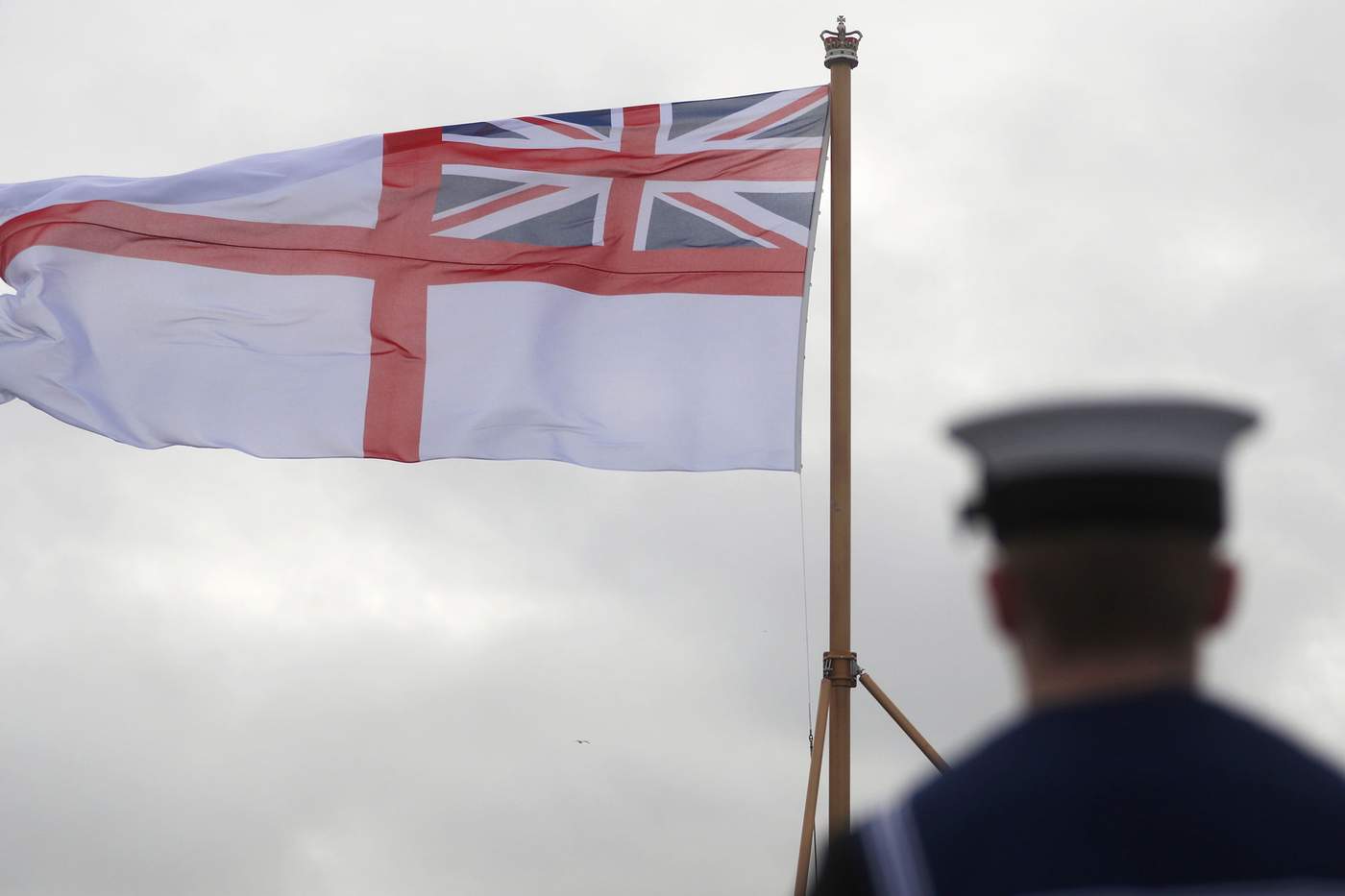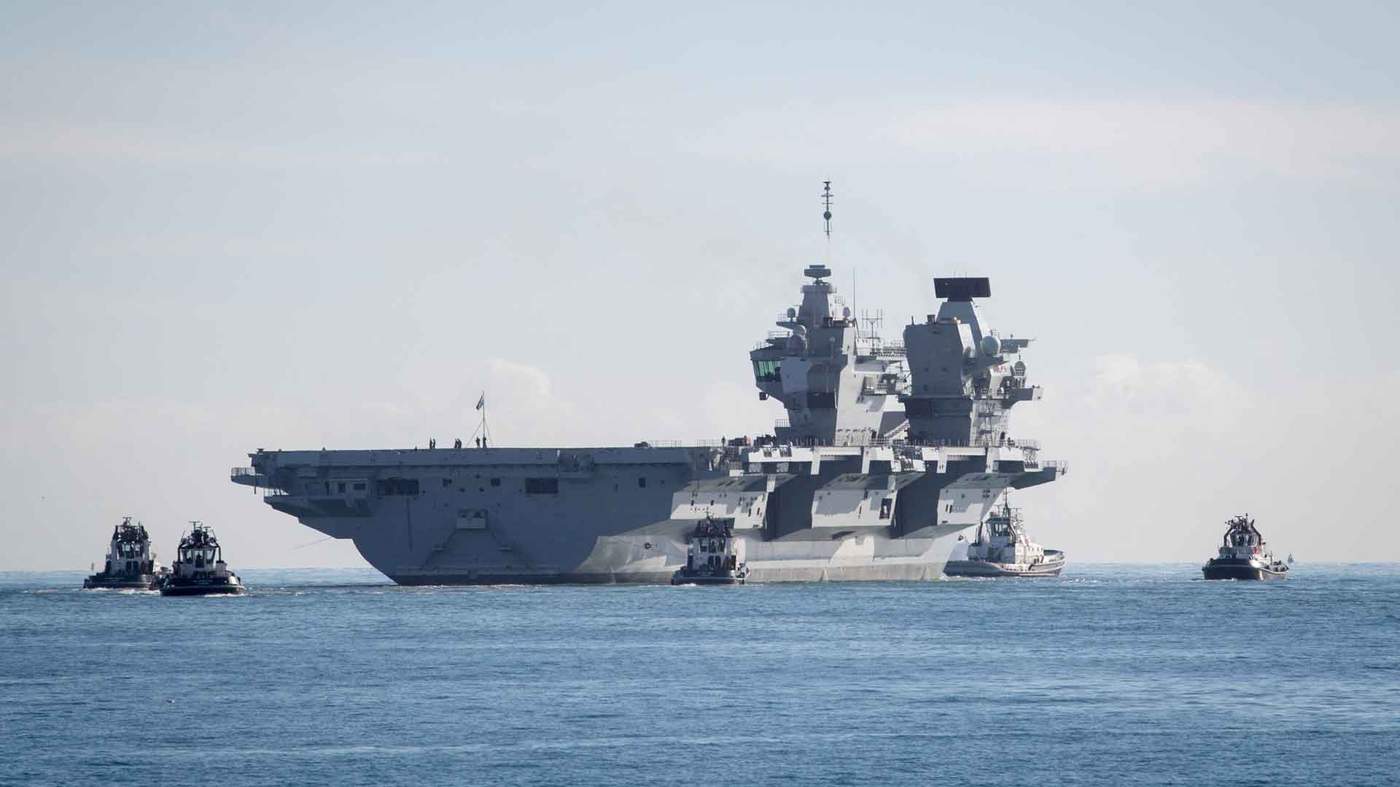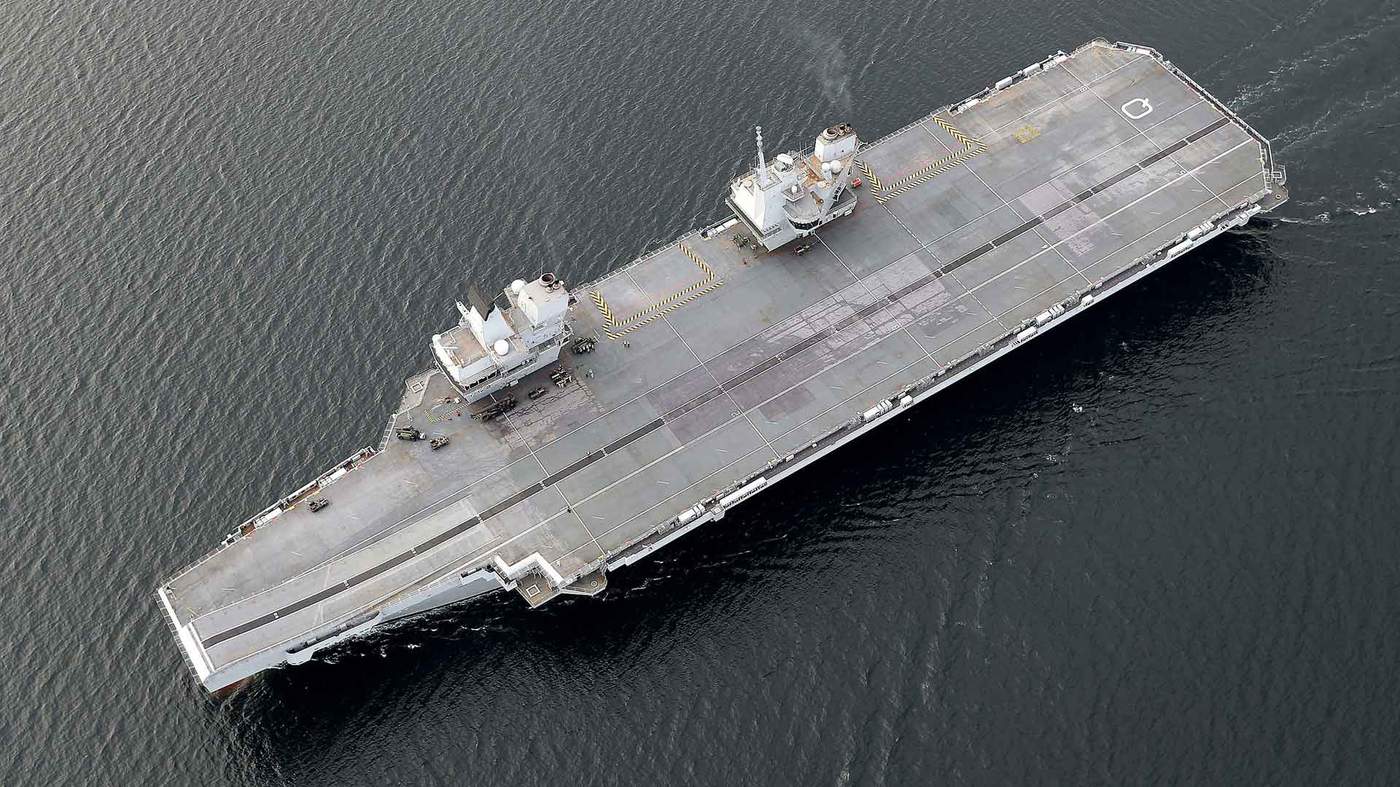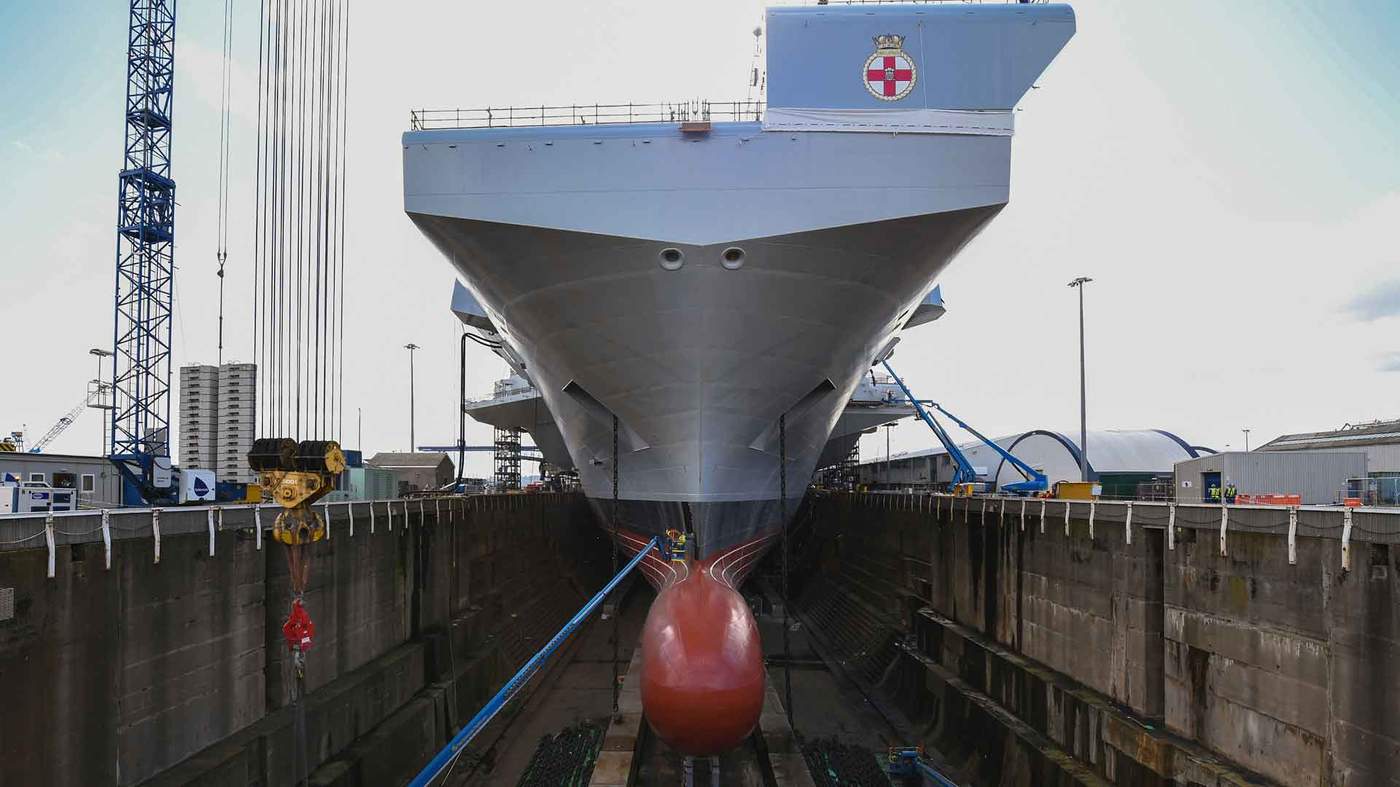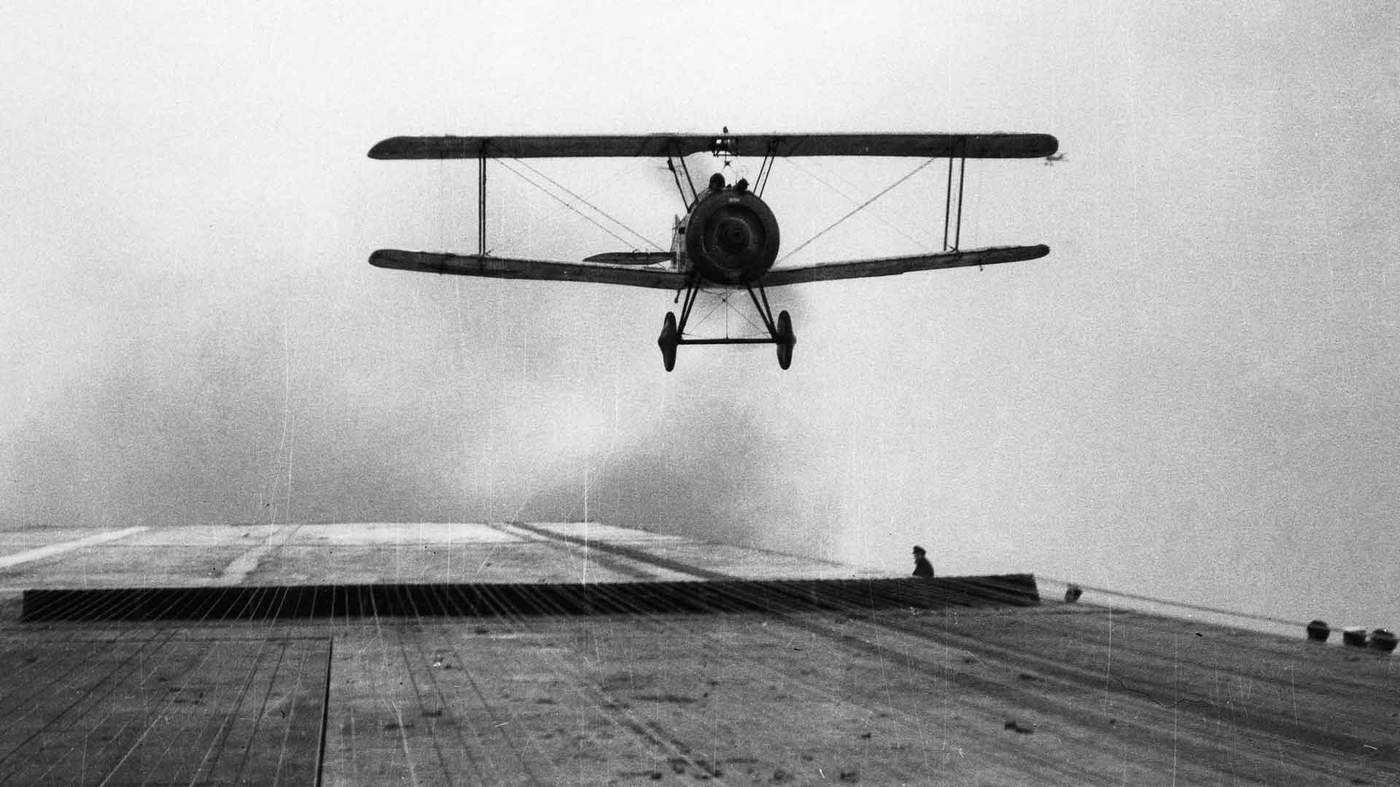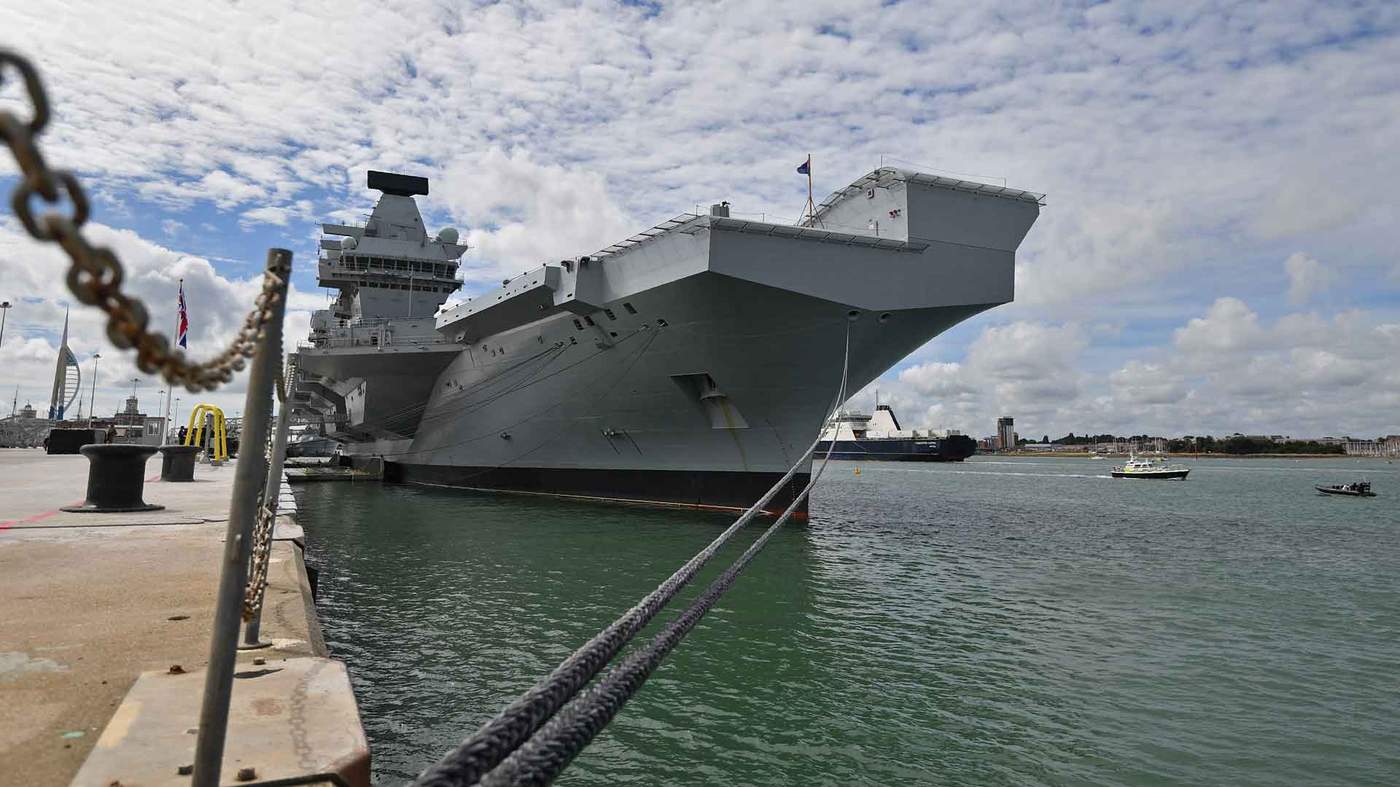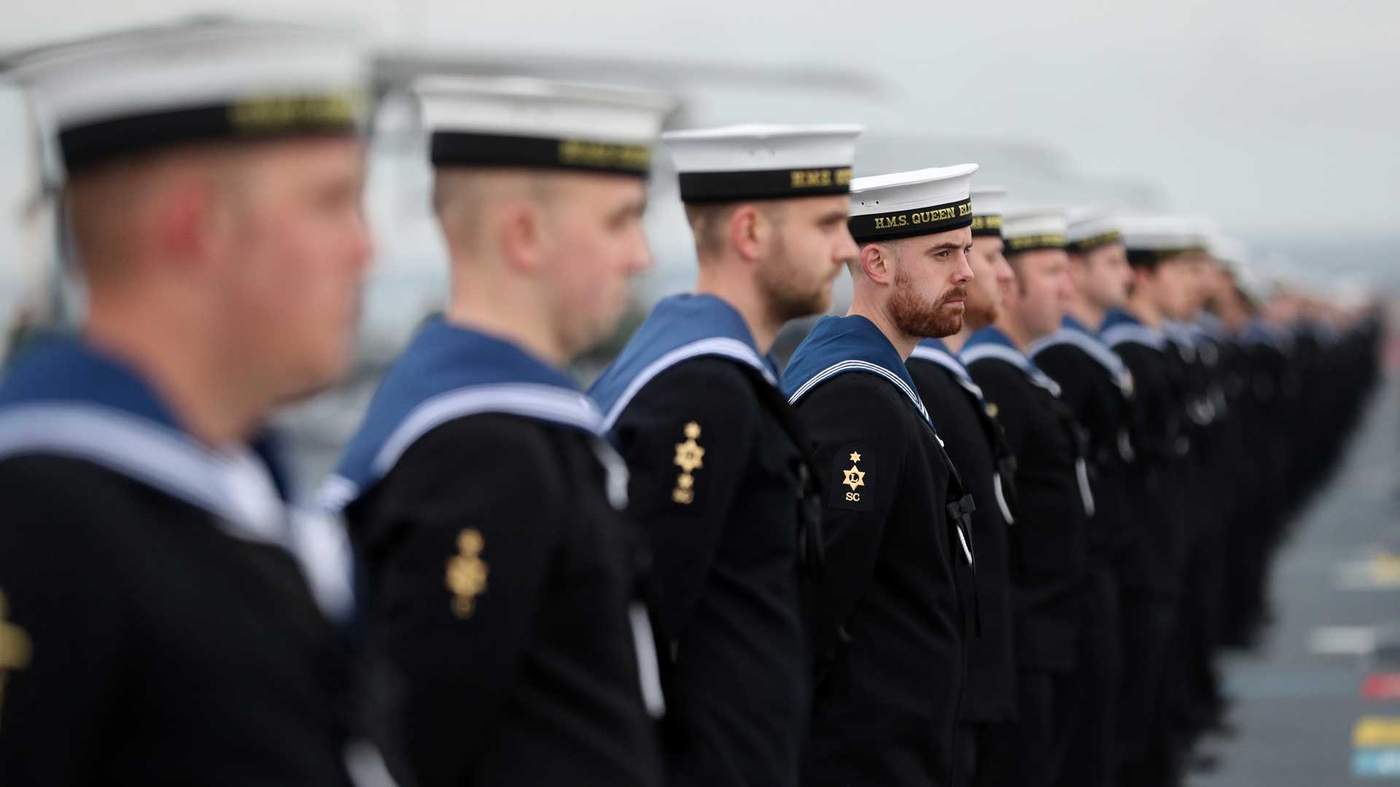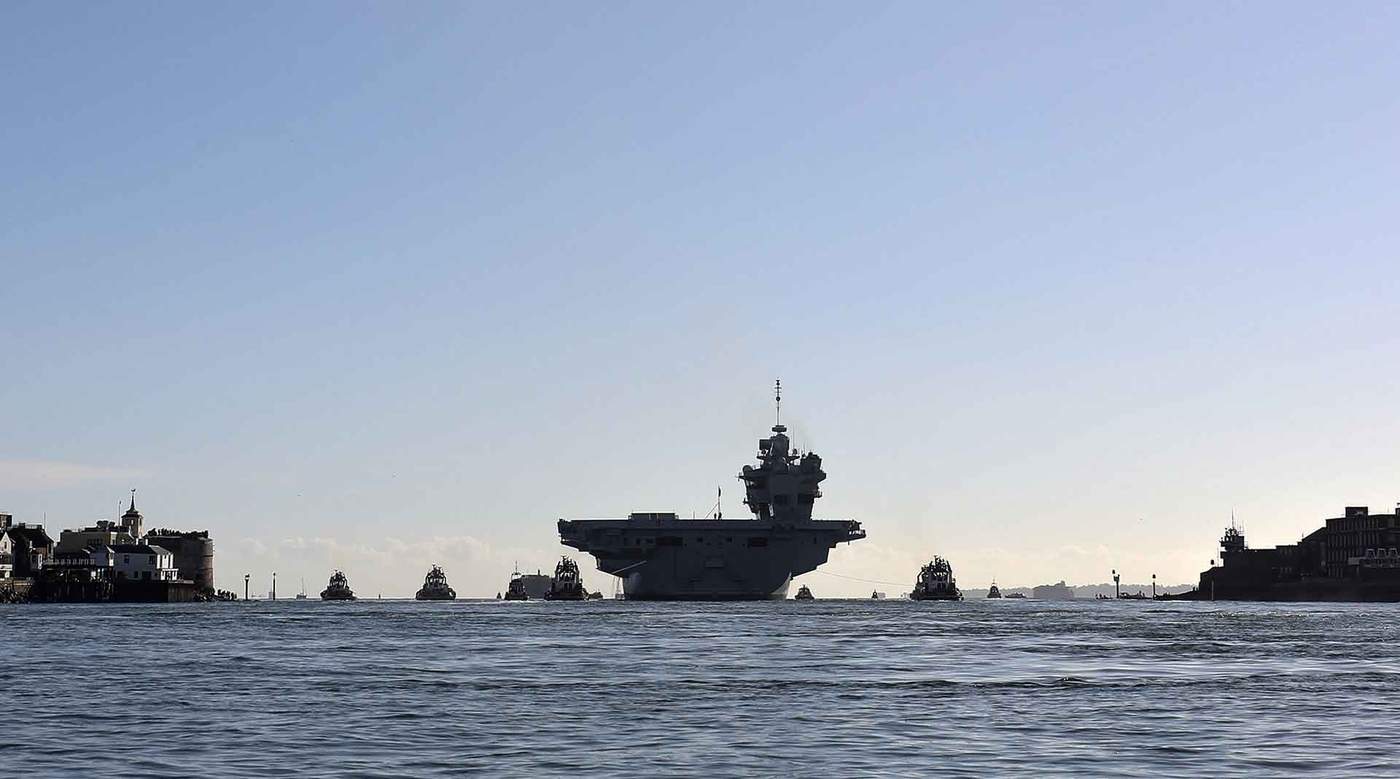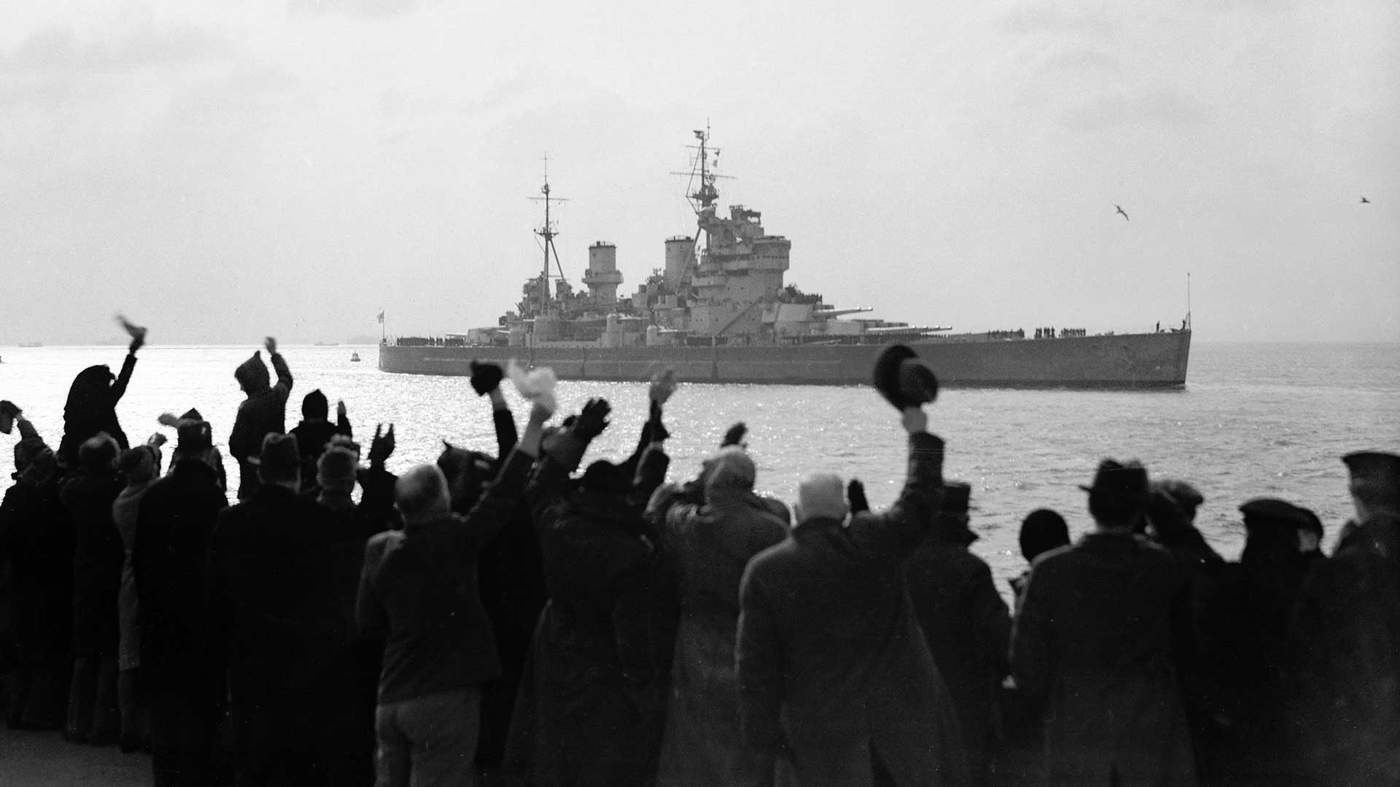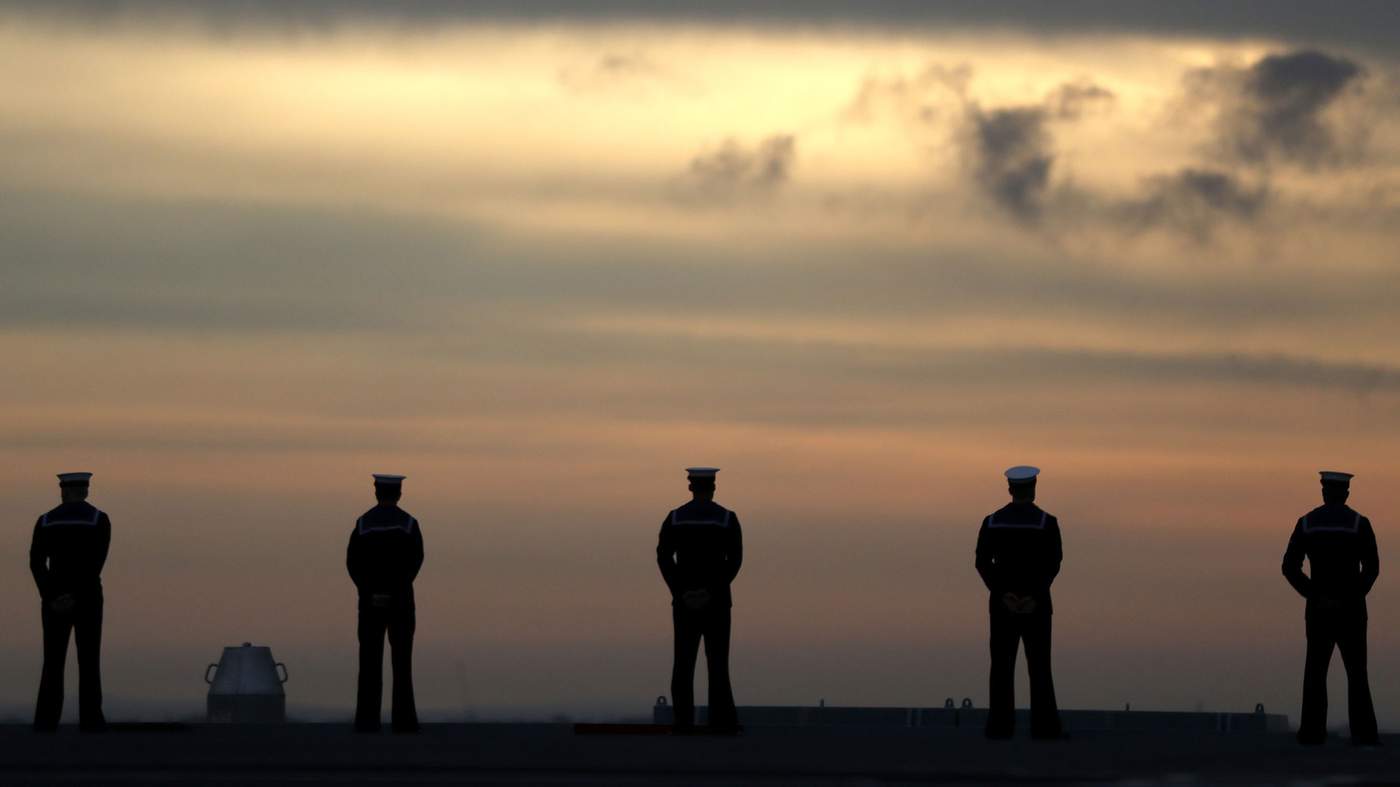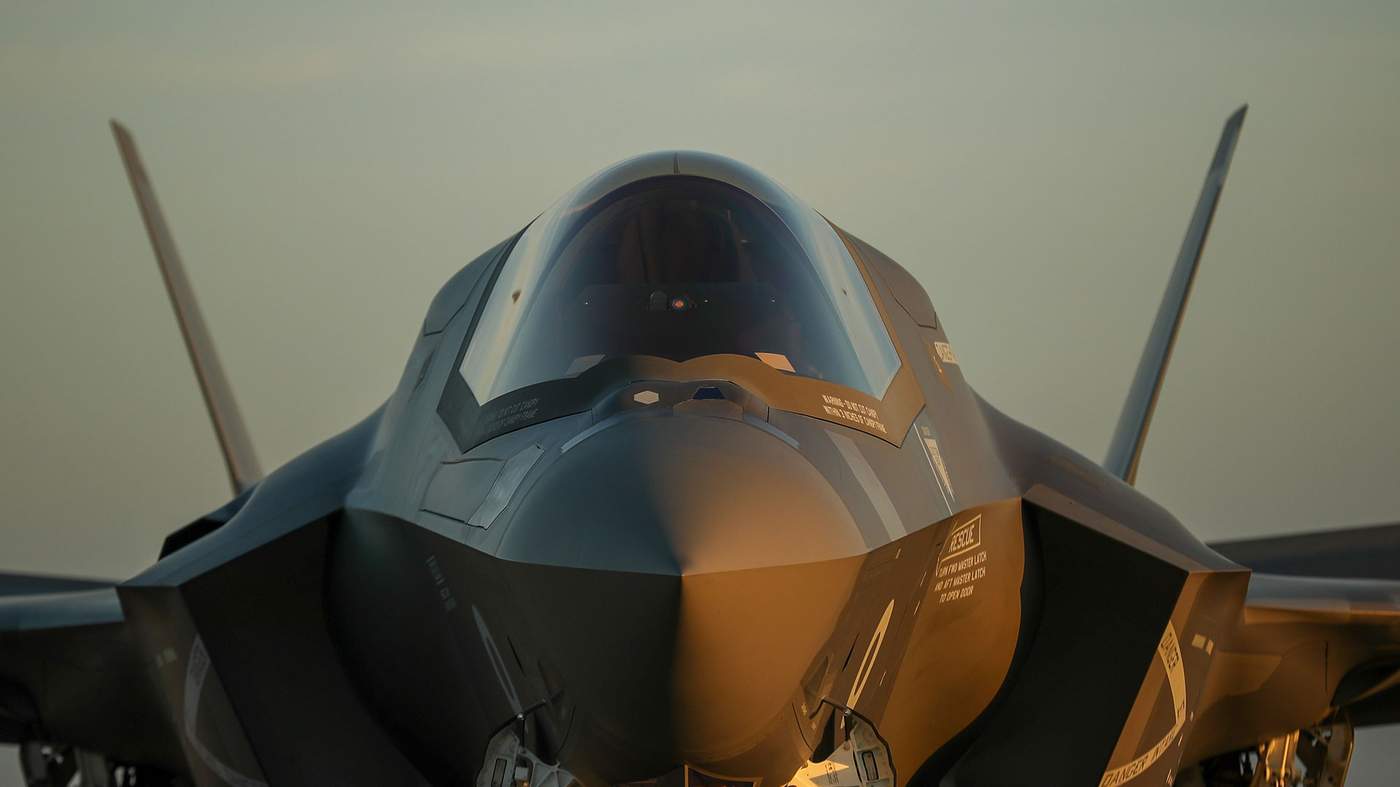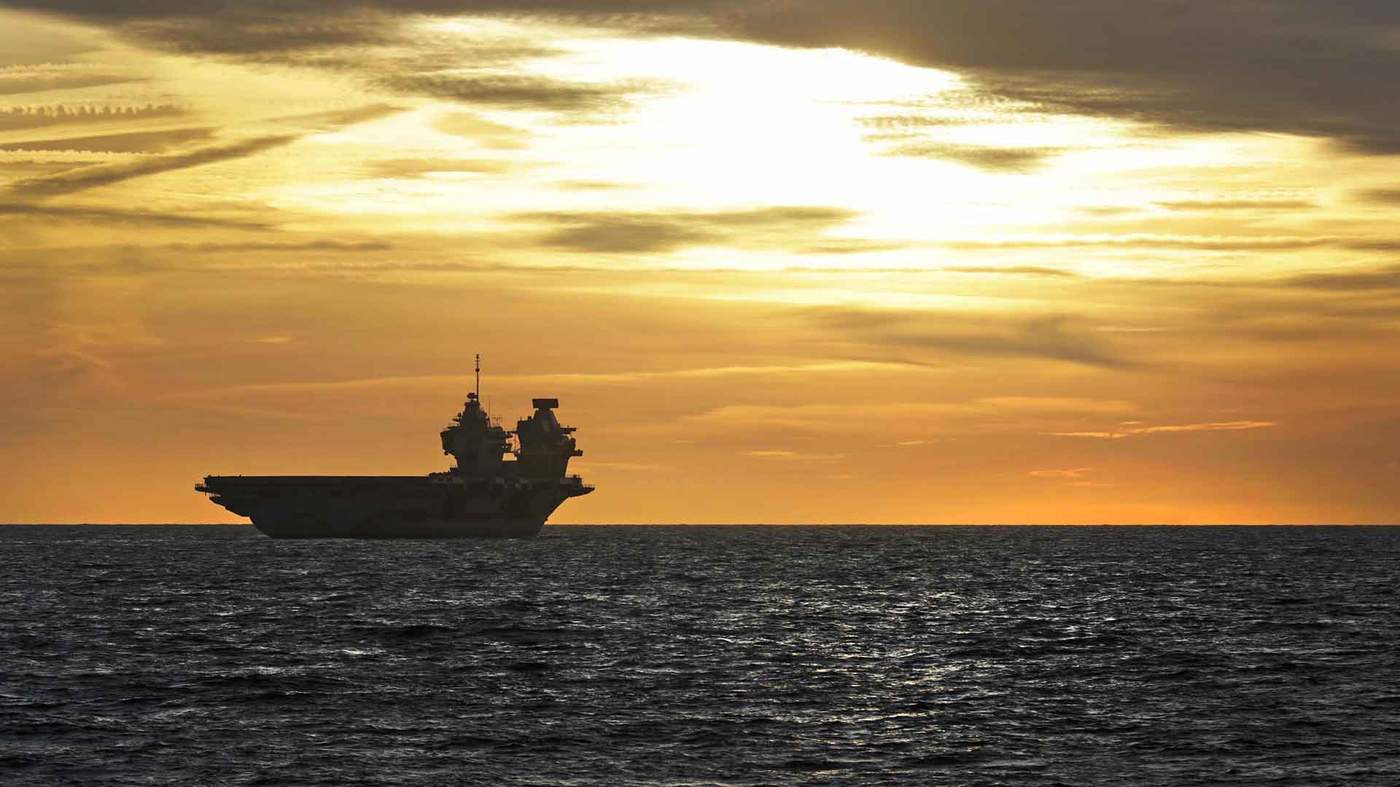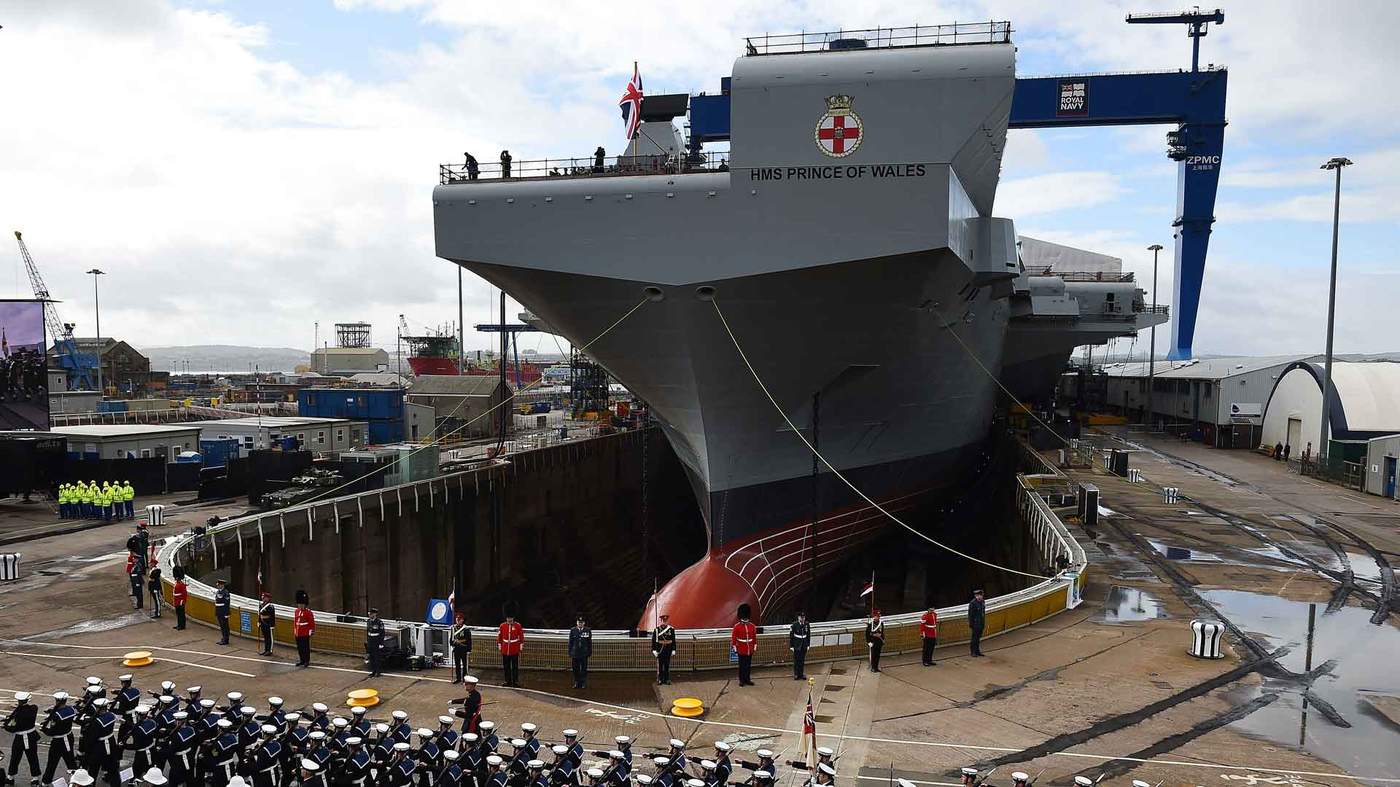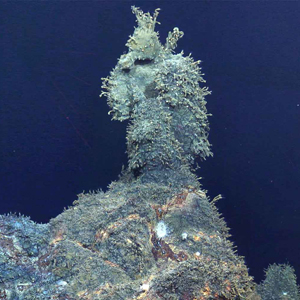Britain's two new aircraft carriers are leviathans and an extraordinary feat of British engineering. Standing on board, it's hard not to be impressed by the sheer scale.
Inside the labyrinth of passageways - wider and more spacious than those on the older US Nimitz-class carriers - you'll find a chapel, a hospital and five galleys to feed the 700-plus crew.
That figure rises to 1,600 when you add the flight crews, engineers and Royal Marines who might also be on board. Even fully crewed there's still plenty of room. The generously sized sleeping cabins are a far cry from the cramped conditions of most warships.
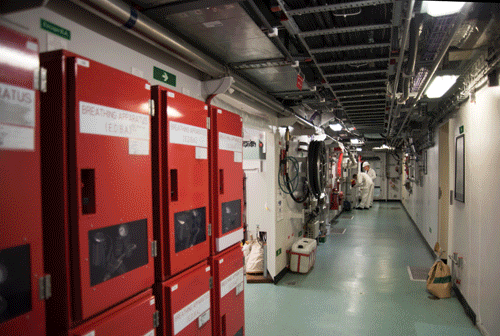
There are five gyms to burn off the calories, though crew members can clock up 20,000 steps - as far as eight miles (13km) - during their average working day.
The 65,000-tonne HMS Queen Elizabeth is longer than the Houses of Parliament and, from keel to the top of the highest mast, taller than London’s Nelson’s Column. You could fit three football pitches on her massive flight deck.
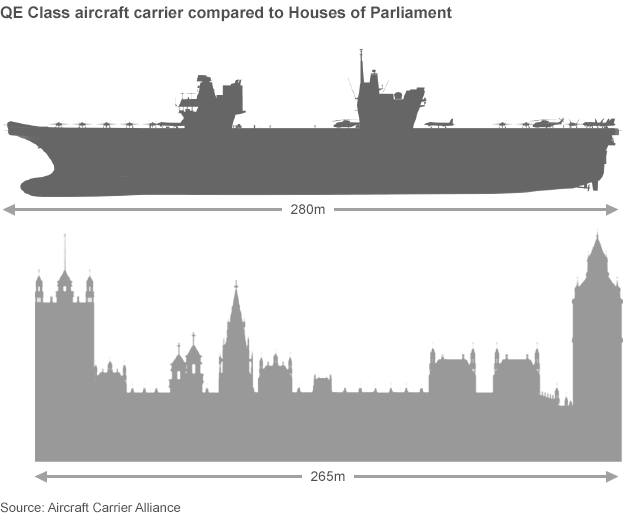
She has been built to carry up to 36 new F-35 stealth jets, as well as helicopters. But in reality she'll routinely sail with fewer than half that number.
The first jets will fly off her deck in flight trials taking place off the east coast of the US this autumn. And she'll sail on her first “operational deployment” in 2021.
HMS Queen Elizabeth is like a small town. Her engines could provide enough power to run tens of thousands of homes.
The ship, and her sister carrier, HMS Prince of Wales, may have been inspired by US Navy equivalents, but the design is uniquely British.
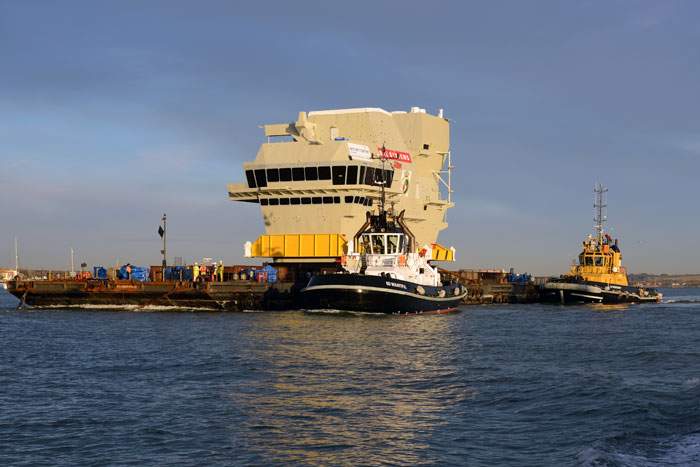
2013: The forward island of the Queen Elizabeth is transported out of Portsmouth Harbour
The bulky angular appearance is, in part, down to how she's been assembled. Sections have been built in shipyards across the UK - Glasgow, Hebburn, on the Tyne, Appledore, in North Devon, Portsmouth and Birkenhead - and then ferried to Rosyth, in Scotland, to be welded together.
Sharing the work was a political, as well as a practical, decision. Rosyth, with its large dry dock, was chosen as the main assembly site when construction work began in 2009. It was just up the coast from the then Prime Minister Gordon Brown’s constituency.
Unlike most other aircraft carriers, the Queen Elizabeth class has two “islands", or towers, protruding from the flight deck.
The forward island houses the bridge for the ship's navigation. The aft island is the flight-control - or Flyco - tower. Large floor-to-ceiling windows on both the bridge and in the Flyco give the crew an unparalleled view of the flight deck.
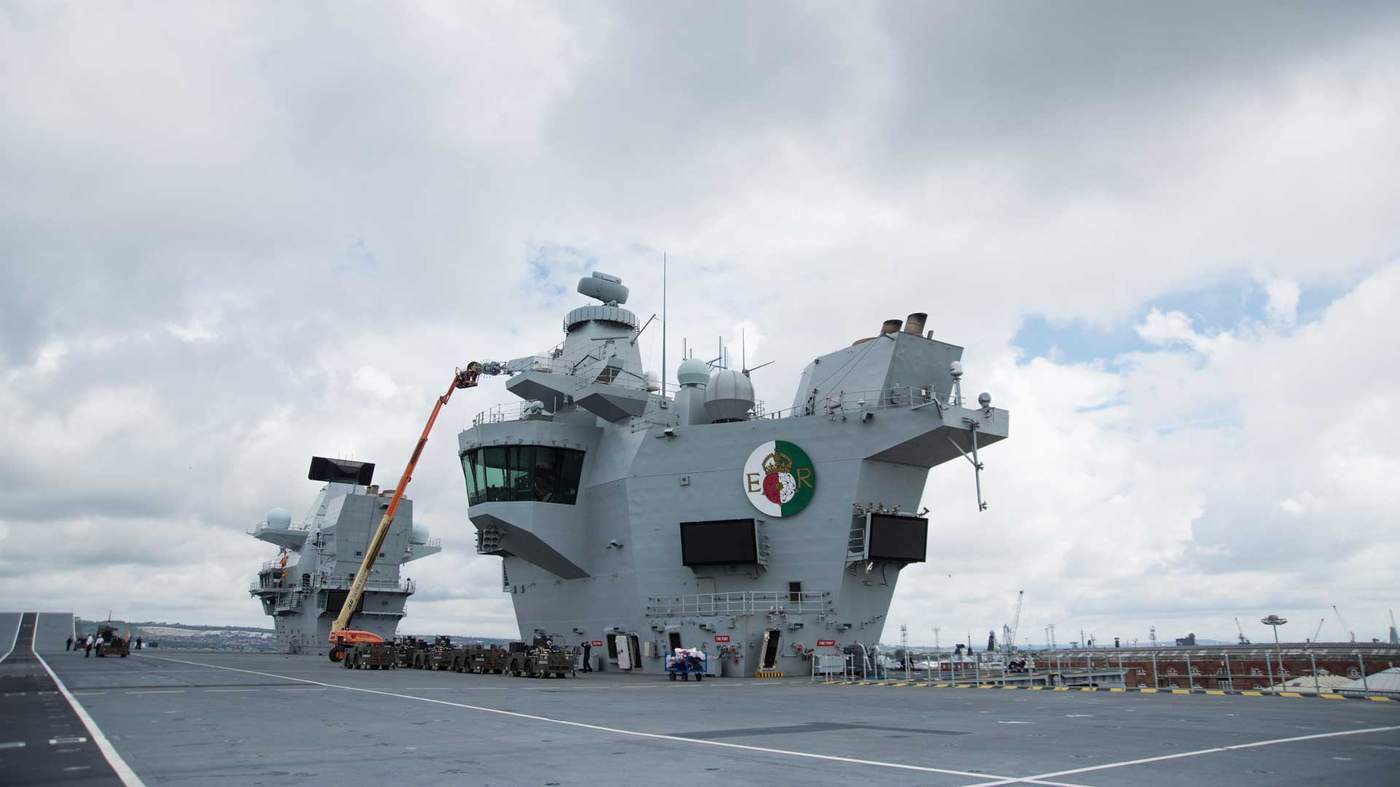
The Royal Navy argues that having two separate islands will allow the carrier to continue operating should one be damaged or destroyed.
But there's another reason. The towers cover the ships' two exhausts and funnels.
While US and French carriers are nuclear powered, the Queen Elizabeth and Prince of Wales run on two large gas-turbine and four diesel engines.
They'll have to be refuelled regularly. Four new tankers have been ordered to do the job - all built in South Korea, not UK shipyards.
For almost a century the massive bulk and distinctive profile of a carrier on the horizon has marked the ultimate representation of military might. It is “gunboat diplomacy” on steroids.
It's been said that the first question a US president asks in a crisis is: “Where's the nearest carrier?”
In 1918, after several years of British and American experimentation with carriers, the UK commissioned HMS Argus, originally designed as an ocean liner but adapted while under construction, to be the world's first full-length flat-deck carrier.
The same year the UK started work on its first purpose-built carrier, HMS Hermes.
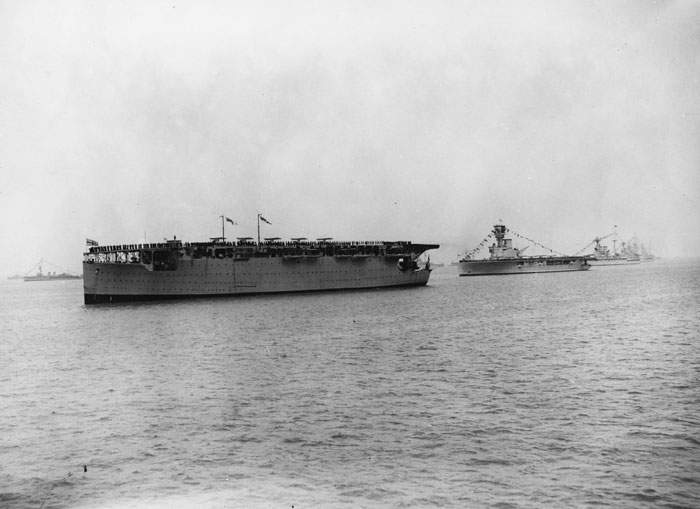
HMS Hermes, the world's first purpose-built aircraft carrier
After World War Two the British experimented with steam-powered catapults - an innovation that was to become the standard way to launch aircraft at sea. In many ways the Royal Navy led the rest of the world.
As Britain's global influence shrank, so did its navy and the size of its aircraft carriers. By the 1990s the Royal Navy had three small “light” carriers - HMS Invincible, HMS Illustrious and HMS Ark Royal. These were primarily designed to carry helicopters to hunt down Russian submarines during the Cold War.
But along with the Harrier jump jet, they kept the Royal Navy in the carrier business.
Retaining the capability had proved vital during the Falklands War in 1982. Britain sent two carriers - HMS Invincible and the older HMS Hermes - to the South Atlantic.
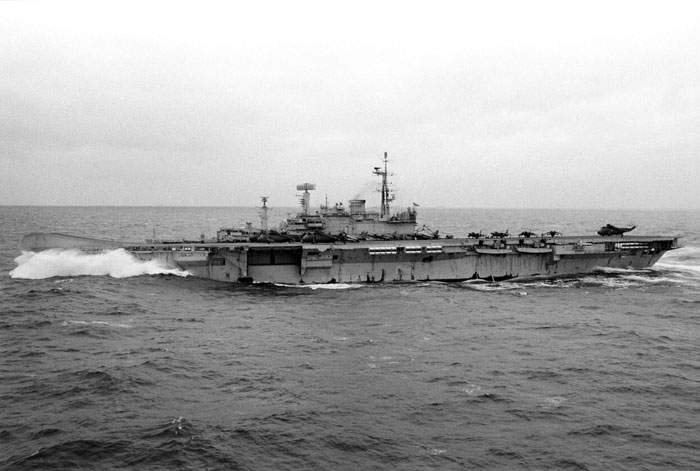
HMS Hermes (successor ship) in the south Atlantic during the Falklands War, 1982
They provided air cover for the vulnerable task force while 8,000 miles from home. Without the carriers and their Harrier jets, few believe it would have been possible to recapture the islands.
An aircraft carrier is a floating piece of sovereign territory which, in theory, has the ability to manoeuvre over 70% of the world's surface.
Commodore Andy Betton, the UK carrier strike group commander, says it can deliver “a meaningful and credible fighting force” anywhere in the world without having to worry about asking for another country's permission.
The last of the light carriers and their Harrier jump jets were scrapped as part of the substantial cuts of the 2010 defence and security review. It was a decision largely based on the state of the budget.

HMS Ark Royal, an Invincible-class carrier, was decommissioned in 2011
By the time HMS Queen Elizabeth goes on her first deployment, Britain will have been without an aircraft carrier for more than a decade.
But the truth is the UK has managed without.
Throughout that time Britain has still been able to launch air strikes around the world from land - in Afghanistan, against Libya in 2011, or more recently against the Islamic State group. At Akrotiri, in Cyprus, Britain already has a permanent base in the middle of the Mediterranean Sea.
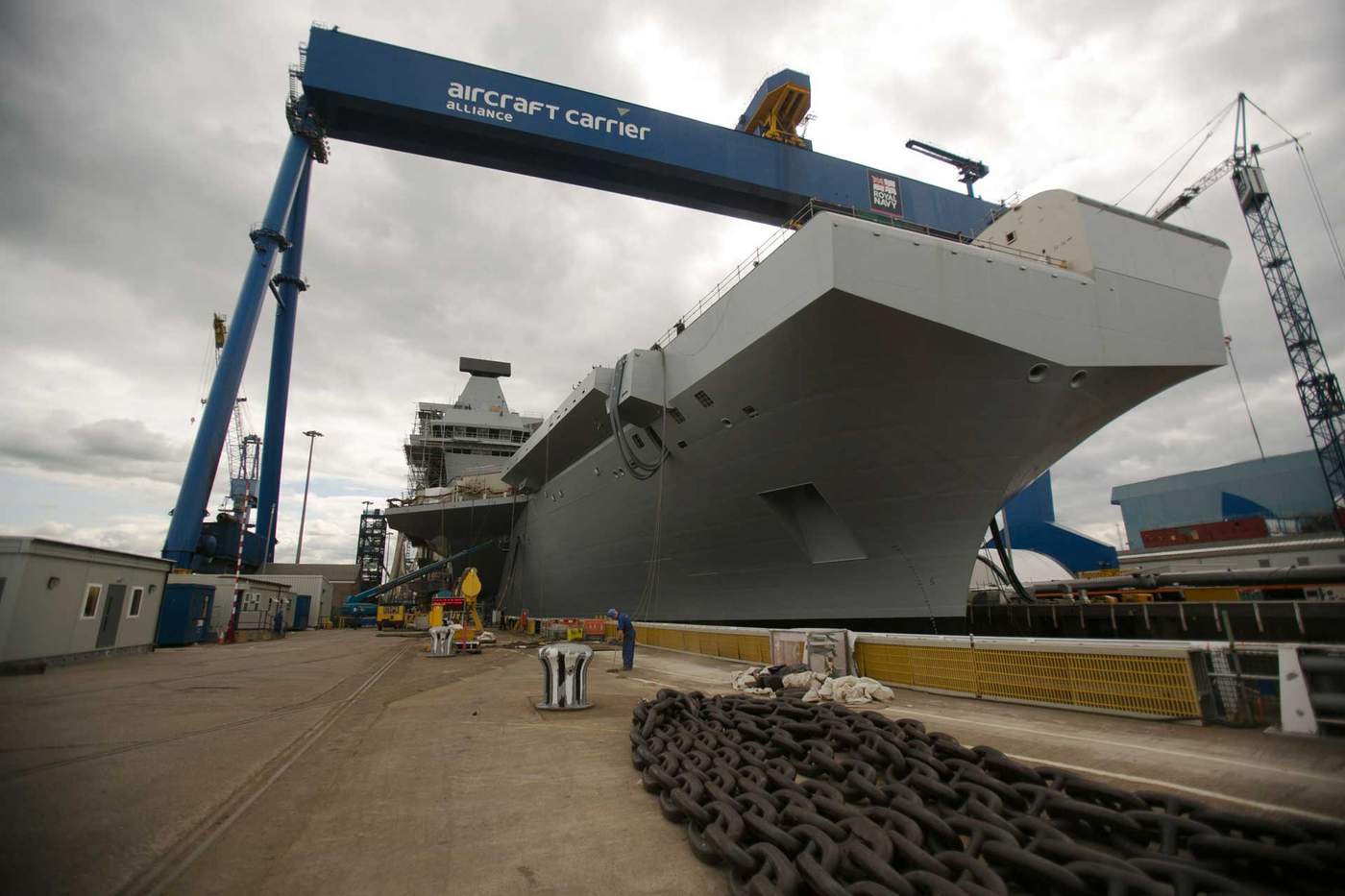
Britain's lack of an aircraft carrier has caused, for some, a dent in national pride rather than a debilitating gap in military operations.
But it certainly has made a difference to how the UK is perceived by allies.
In 2014, the former US Defence Secretary, Robert Gates, warned that without aircraft carriers Britain would not have the “full spectrum” of military capabilities and therefore risked its position as a full military partner of the US.
Perceptions matter.
An aircraft carrier is a statement of intent and global ambition as well as a very visible projection of military power. That's why the US Navy has 10. China has one and is building another. Russia and France each have a carrier and have now been joined by India.
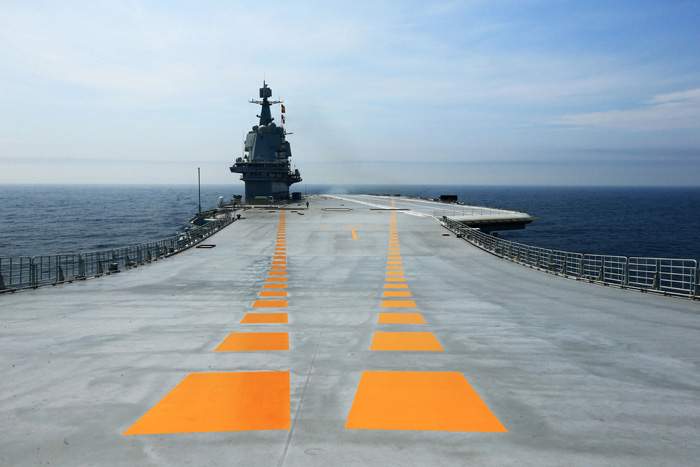
China's first domestically manufactured aircraft carrier during its first sea trial
The UK's investment in these new carriers was a political, as much as a military, decision.
Nick Childs, a naval analyst at the International Institute for Strategic Studies, says that when Tony Blair's government decided to press ahead with the carrier project in 1998 “it was a deliberate decision to step up the strategic ladder”.
The Royal Navy is already referring to the new ships as Britain's “conventional deterrent” - a complement to the nuclear deterrent of Trident missiles carried by the four Vanguard-class submarines.
In the words of the captain of the first of these carriers, HMS Queen Elizabeth, “it's going to be an iconic symbol of British naval power”.
Her captain, Commodore Jerry Kyd, boldly predicts the carriers will put the Royal Navy and the UK “back in the premier league” of the world's maritime powers.
The new carriers are built on a scale that defies the realities of a shrinking Royal Navy and smaller defence budget.
The two ships have cost more than £6bn to build. That's almost double the original budget, although the Navy is keen to highlight that they've been built to last for the next 50 years.
Given the parlous state of the UK's finances in 2010, David Cameron's coalition government briefly thought about scrapping the whole programme. But ministers found out that cancelling the contract would have cost them more in penalty fees than pressing ahead.
Then there was talk of selling off, or “mothballing”, one of the carriers. In the end, it was decided both would be entering service - stretching the Royal Navy's already limited resources.
But there are already doubts over whether Britain can afford that number. Earlier this year the Commons Public Accounts Committee warned the entire carrier strike programme left the defence budget “financially exposed”.
Among the concerns highlighted by MPs were fluctuations in the value of the pound, post-Brexit, making the F-35 even more expensive.
The National Audit Office estimates the costs of building the two new carriers, along with the initial order of F-35 jets and the Merlin Helicopters that will provide early-warning radar, will be more than £14bn.
Costs will inevitably rise. The navy has still to work out how it will transport people and equipment on and off the carrier while at sea. It might mean purchasing new US tilt-rotor aircraft, like the Osprey.
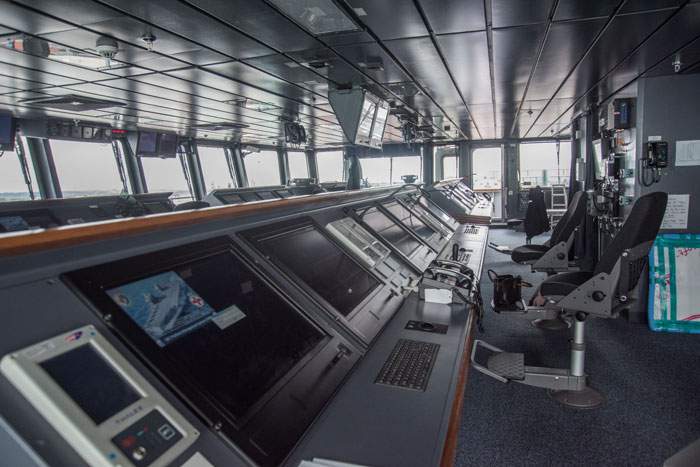
And operating the carriers and their jets won't be cheap, either.
It costs the US Navy more than $100m (£78m) a year to keep just one of their larger Nimitz-class carriers at sea, not including the costs of flying operations, ammunition and the salaries of the crew.
The UK Ministry of Defence hasn't been able to provide figures for the running costs of the new vessels. But Greg Bagwell, a former RAF air marshal, believes it'll be a strain on already limited resources.
He says Britain “does not have the money, people or capacity” to run the carriers as the navy would like.
Carriers don't sail around the world alone. They are sent as a “strike group”.
First Sea Lord Admiral Sir Philip Jones says that in “high threat” areas Britain's carriers would be protected by two air-defence destroyers, two anti-submarine warfare frigates and an attack submarine - along with a tanker and a “solid support” ship carrying food and ammunition.
That would be a sizeable chunk of the Royal Navy’s shrinking fleet.
By the time of the Falklands War in 1982, the Royal Navy had half that number - 60 warships.
Further defence cuts, after the 2010 strategic defence and security review, took it to its current level - a new low of 19 frigates and destroyers.
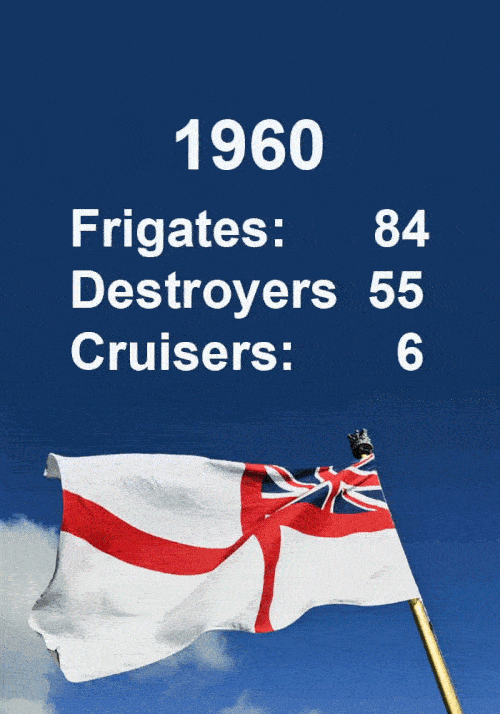
The navy argues that today's warships are far more sophisticated than those of the past. One new one is worth many old ones, so the argument goes.
But then again, today's British warships are hardly armed to the teeth. Most have empty spaces on board for weapons the navy can't currently afford - like cruise missiles or the most up-to-date anti-ship missiles and anti-submarine torpedoes.
The navy has struggled to crew one carrier, let alone two. Such is the personnel shortage that a frigate and destroyer have been tied up in Portsmouth as “harbour training ships” for the past 18 months.
But the Royal Navy has, to some extent, prepared itself for the challenge.
While a US carrier has more than 3,000 sailors on board, HMS Queen Elizabeth's crew is made up of just 700 - or 1,600 with all of the flight crew and marines.
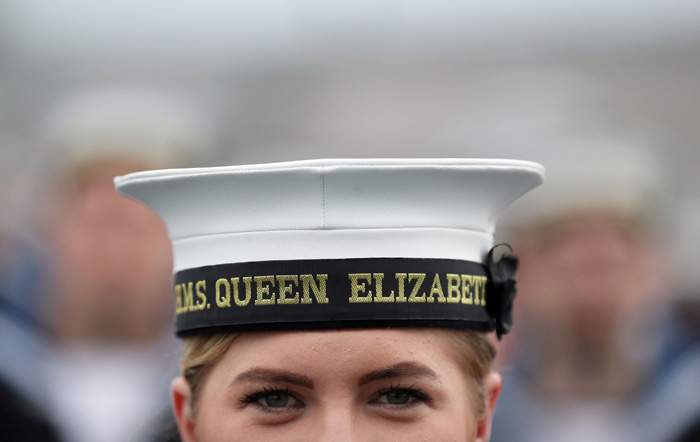
The navy argues it has been able to keep numbers low by relying on automation. Moving bombs and missiles to the flight deck, for instance, is done by a series of machines and lifts.
But Cdre Kyd has already hinted he might not have enough people on board HMS Queen Elizabeth. He has described the basic crew of 700 as a “good starting point”. On a recent visit to the ship I was told the crew numbers had already gone up to nearer 800.
The Royal Navy is staking its future on two very expensive warships that will put a considerable strain on already limited resources.
The military historian, Sir Max Hastings, has called them “symbols of everything that's wrong with British defence policy”. He provocatively predicted they'll be two “giant embarrassments” consuming “immense resources while possessing almost zero utility”.

Before he resigned as defence secretary last year, Sir Michael Fallon, dismissed the criticism. He said “armchair” commentators should “shut up” and described the carrier as “a highly versatile and potent force” that would be capable of humanitarian and disaster relief as well as “high-end warfighting”.
Gavin Williamson, his successor, said the carrier showed the rest of the world that the UK was “not a nation in retreat” and that it would “strike fear into the hearts of all our enemies” and allow Britain to “project its influence and its power right across the world”.
The carriers have to some extent become a totem for the ambitions of a post-Brexit “global Britain”.
They will certainly be a welcome addition for the UK's closest military ally - the United States.
The US has been a big influence on Britain re-entering the small group of nations operating “supercarriers”.
The US Navy has also helped its UK counterpart to retain the skills it needs to operate aircraft carriers. UK pilots have been allowed to fly off US carriers and there's been help in training UK flight-deck crews.

The US aircraft carrier Carl Vinson
But Britain's decision to invest in its biggest warships in an era of austerity might look to some like delusions of grandeur.
Nick Childs acknowledges there might be a perception, as a result of Britain’s history, of “a self-consciousness about trying to revive past imperial glories, or having continuing pretensions of being a pocket superpower”.
The Royal Navy will now be able to plug the gaps for the Americans when they can't send one of their own carriers to the Gulf.
There are even new facilities being built in the middle east to support them.
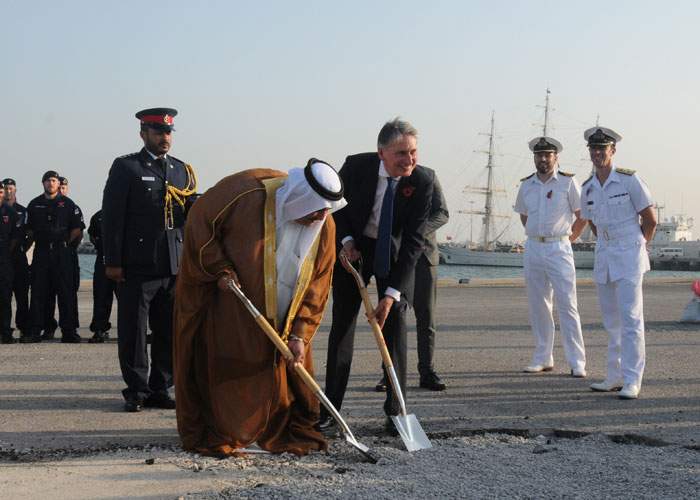
2015: Philip Hammond (then foreign secretary) and the Bahraini foreign minister “break the ground” on the UK's naval support facility in Bahrain
The US Marine Corps’ F-35 jets will be on HMS Queen Elizabeth's first operational deployment. They'll certainly help fill the massive deck early on when the UK will have a relatively small number of F-35s of its own.
Cdre Betton says that “allies will help share the burden of resources” and “expand the authority of working as part of a coalition”. In other words, give it more international clout.
But it's the UK that will have to pick up the bills for operating these enormous ships.
Greg Bagwell says there's a danger the ships will “distort and skew” Britain's armed forces.
The Queen Elizabeth-class carriers are nearly three times the size of the old Invincible-class.
They're also bigger than France's carrier, Charles de Gaulle, and only slightly smaller than the US Nimitz-class.
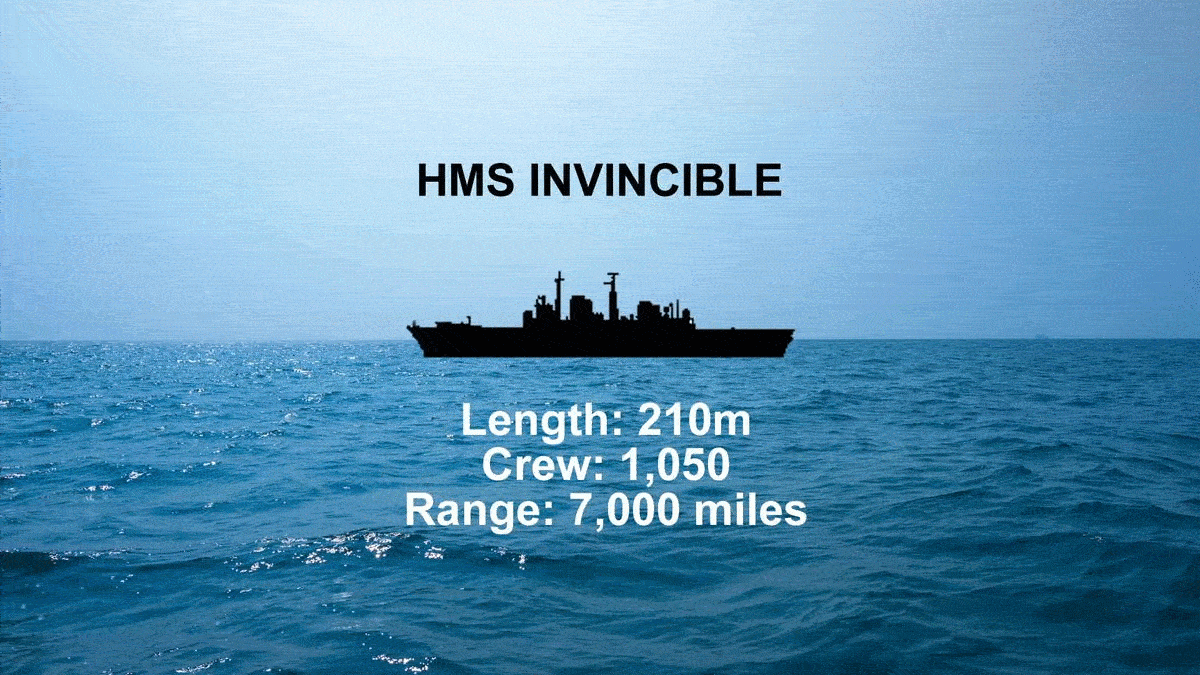
Some argue the navy could - and should - have managed with smaller vessels - on the scale of the Invincible light carriers.
The Italian Navy's new Trieste-class carrier, currently being built, is a third of the size and, in theory, a third of the cost of HMS Queen Elizabeth.
Dr Roberts says: “We've built something huge to do the same thing that we were doing 20 years ago much more cheaply.”
Cdre Betton insists “size gives you versatility” and “political and strategic choice”. He argues the old Invincible-class carriers would not have been able to provide enough jets at a “sustained” level.
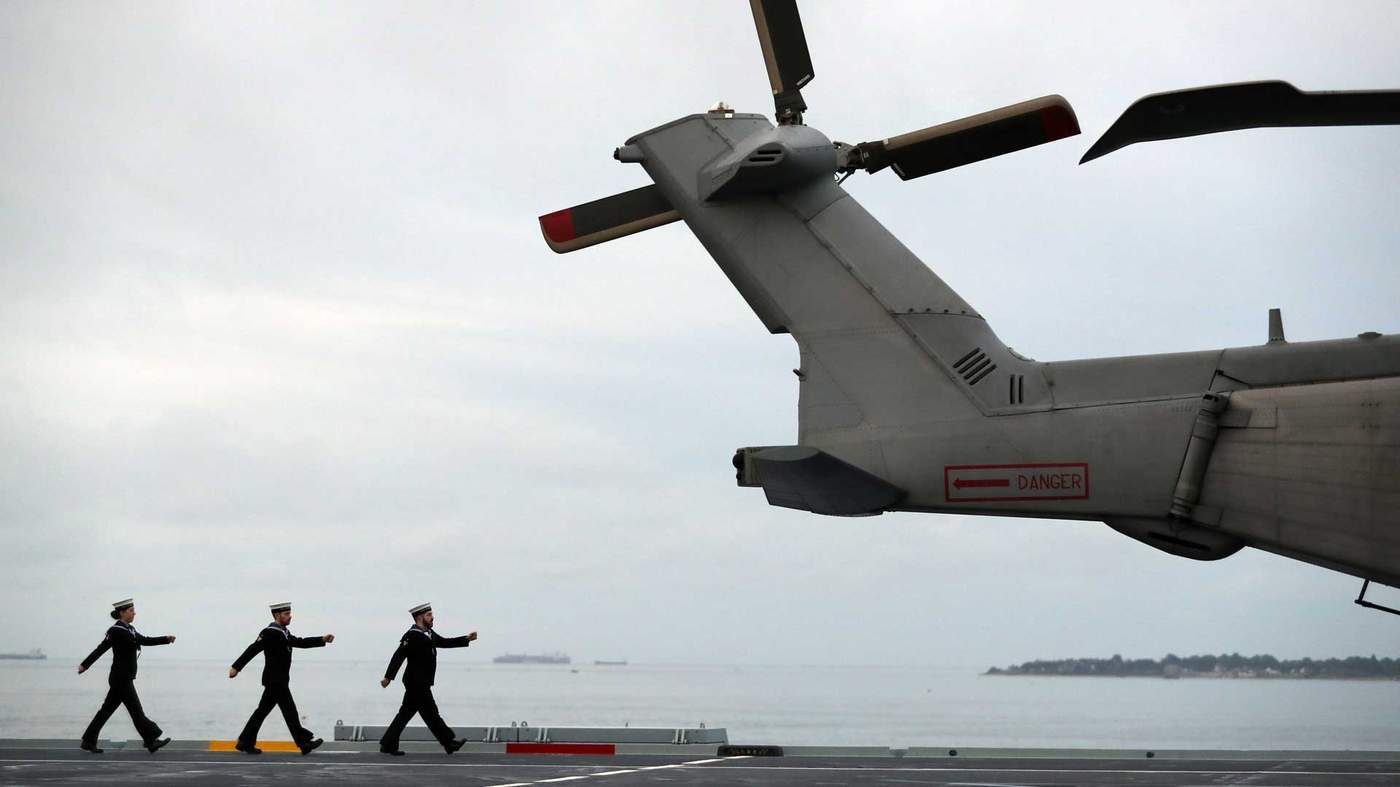
The carrier can also be loaded with a mix of different helicopters - including Merlins (general-purpose and anti-submarine capability), Wildcats (multi-role), Chinooks (heavy-lift and transport) and Apache ground-attack helicopters.
The reality is that because the nation has invested so much in these carriers they'll have to be jacks of all trades.
Just to run the carriers the navy is having to get rid of other ships. It has already sold the ageing HMS Ocean, its helicopter landing ship.
Ocean was used to launch Apache helicopters during the Libya campaign in 2011 and most recently to help last year in hurricane relief in the Caribbean. The navy needed Ocean's crew for the second carrier.
It is also having to work out whether it can afford to operate and crew its two amphibious assault ships, HMS Albion and HMS Bulwark.
The biggest break with convention is the way Queen Elizabeth will launch and recover aircraft.
Most aircraft carriers operate catapults to launch their jets and arresting wires to recover them - what's called “cats and traps”. The Queen Elizabeth class does not.
The new F-35B jets will take off from a “ski jump” at the front of the ship and then hover to land - similar to the way Harrier jump jets flew on and off HMS Ark Royal.
In theory the Queen Elizabeth-class carriers could be fitted with “cats and traps”. This was considered in 2012 but was deemed too expensive - the estimated cost of fitting them to just one carrier went up from £500m to £2bn. Some in the Navy still hope they'll be retrofitted at a later date to operate other aircraft - such as unmanned drones.
Without “cats and traps” there will be limits to the other nations that can use the British carriers.
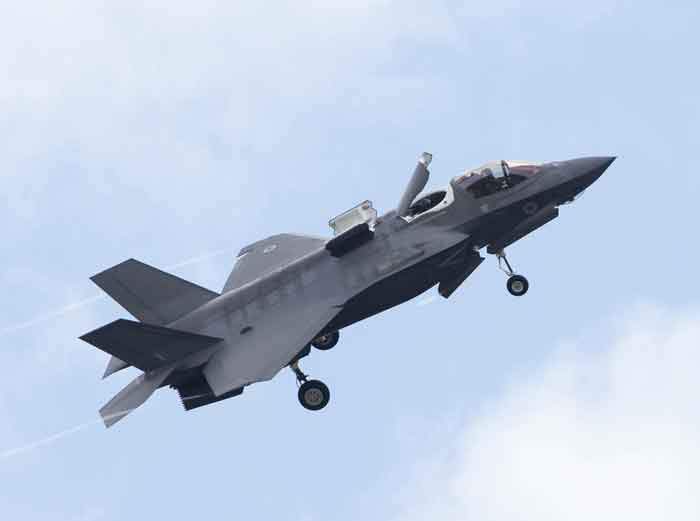
The US-designed F-35 will be Britain's first “stealth” fighter - designed to strike deep into enemy territory while being harder to detect by enemy radar.
Three variants of this fighter have been developed - the A variant for land bases, the B variant for short take-offs and vertical landings (STOVL) and the C variant for aircraft carriers fitted with “cats and traps”.
The production cost for each aircraft has been $120m (£95m). Software, spares and support will add to the final bill.
The main contractor, Lockheed Martin, says that as production ramps up, the cost of each aircraft will drop considerably. British defence firms are involved in the project, making about 15% of the jet, but it's still expensive.
Greg Bagwell suggests there's “no way” Britain can afford to keep the 24 F-35s on board the carrier for routine deployments.
He adds that, in contrast to the Royal Navy, the US Navy will be flying their older F-18 jets alongside their F-35s.
The older cheaper jets will be the workhorses. In contrast, Mr Bagwell says, “we'll be using a thoroughbred for donkey rides”.
But Cdre Betton, who's overseeing the Royal Navy's carrier strike group, says 24 is the “minimum credible number to support an operation”. It signals a potential fight between the RAF and the Royal Navy over numbers and who has operational control of the aircraft - especially in the early days when numbers of the aircraft available are low.
The F-35's “stealth” capability and sophisticated sensors will give the navy an edge gathering large amounts of data and intelligence in dangerous places.
But it won't be easy for the F-35 to relay all the information securely - not least to a ship with limited bandwidth. The navy says this challenge will eventually be overcome.
Russia has already called HMS Queen Elizabeth a “large convenient target”.
Many nations are investing heavily in anti-ship missiles. China can produce hundreds of its DF-21D ballistic ship missiles for the cost of a single carrier. The Pentagon estimates the range of such a missile is more than 1,000 miles.
Russia and Iran are also acquiring anti-ship missiles as well as submarines - another obvious threat to the carrier.
But you don't need sophisticated weaponry to target a large ship. Iran's Revolutionary Guard Corps has practised swarming a US carrier as it passes through the narrow Strait of Hormuz.
Dozens of small speed boats could potentially be used to overwhelm a carrier's defences.
And no-one can discount the possibility of terrorist groups getting hold of low-tech anti-ship missiles, boats or drones loaded with explosives to target a carrier near the shore.
However, Adm Jones believes that the great advantage of a carrier strike group is that it's always a “moving target”.
The captain of HMS Queen Elizabeth, Cdre Kyd, also insists that finding a carrier in a large ocean isn't that easy, especially when the enemy has to penetrate “layers of defence” from the other ships, aircraft and submarines that'll protect it.
It's also worth remembering they'll be in service for half a century - the final captain of HMS Queen Elizabeth probably has not yet been born.
But Dr Roberts says there's a danger that the nation has built a narrative that says these two carriers represent “the essence of Britain”. That makes them very tempting targets for any adversary.
There is the danger, too, that with the Royal Navy's resources and efforts focused so much on the carriers, it becomes little more than a “carrier escort fleet”.
Given the huge pressures on the defence budget, some will ask whether these are ships the nation can really afford.
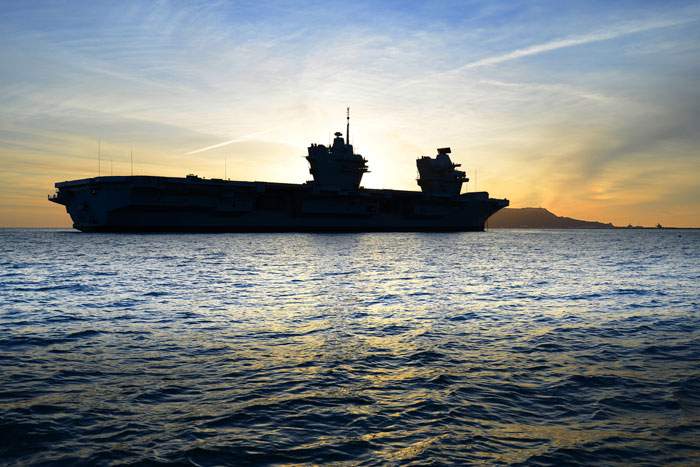
Cdre Betton insists there is no “buyer's remorse”.
There are still good reasons why Britain has invested so much money and its national prestige in building these two massive warships.
The UK is a maritime nation. The carriers will be able to project British military power right across the globe for the next half-century. They will be used to deepen defence relationships with key allies - most notably the US.
But the sheer cost of running these two behemoths at a time when the defence budget is already under huge strain may make it difficult for the Royal Navy to keep its ambitions afloat.
